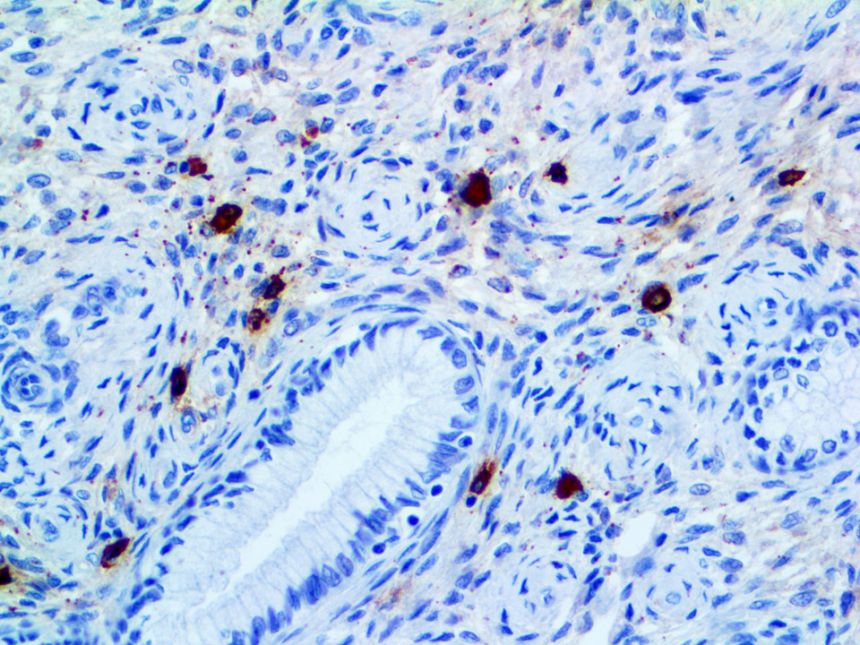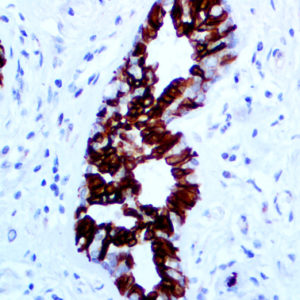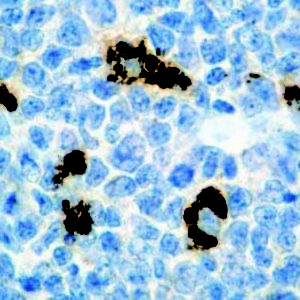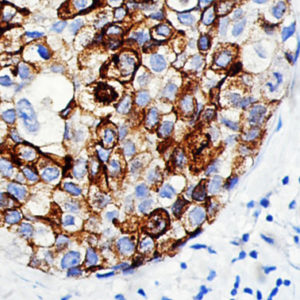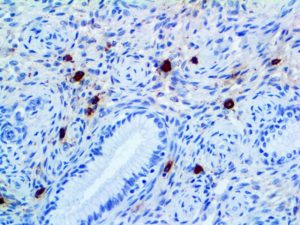
IHC of Tryptase on an FFPE Uterus Tissue
| Intended Use | For In Vitro Diagnostic Use | |||||||||||||||||||||||||||||||||||
| Summary and Explanation | Tryptase is the most abundant secretory granule-derived serine proteinase contained in mast cells and has recently been used as a marker for mast cell activation. It is involved in allergenic response and is suspected to act as a mitogen for fibroblast lines. Elevated levels of serum tryptase occur in both anaphylactic and anaphylactoid reactions, but a negative test does not exclude anaphylaxis. Mast cells contain a number of preformed chemical mediators such as histamine, chymase, carboxypeptidase and proteolytic tryptase. Human mast cell tryptase is considered to be an important marker of mast cell activation as well as an important mediator of inflammation. Anti-tryptase is a good marker for mast cells, basophils, and their derivatives. | |||||||||||||||||||||||||||||||||||
| Antibody Type | Rabbit Monoclonal | Clone | EP259 | |||||||||||||||||||||||||||||||||
| Isotype | IgG | Reactivity | Paraffin, Frozen | |||||||||||||||||||||||||||||||||
| Localization | Cytoplasmic | Control | Mast Cell Containing Tissues, Uterus | |||||||||||||||||||||||||||||||||
| Presentation | Tryptase is a rabbit monoclonal antibody derived from cell culture supernatant that is concentrated, dialyzed, filter sterilized and diluted in buffer pH 7.5, containing BSA and sodium azide as a preservative. | |||||||||||||||||||||||||||||||||||
| Availability |
| |||||||||||||||||||||||||||||||||||
| Note: For concentrated antibodies, please centrifuge prior to use to ensure recovery of all product. | ||||||||||||||||||||||||||||||||||||
